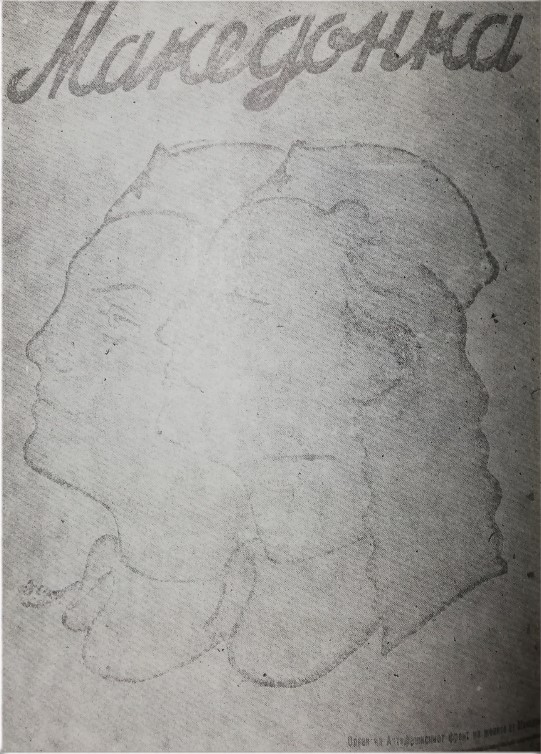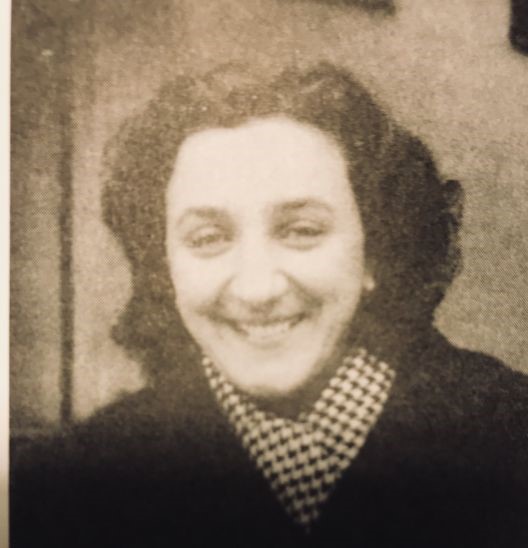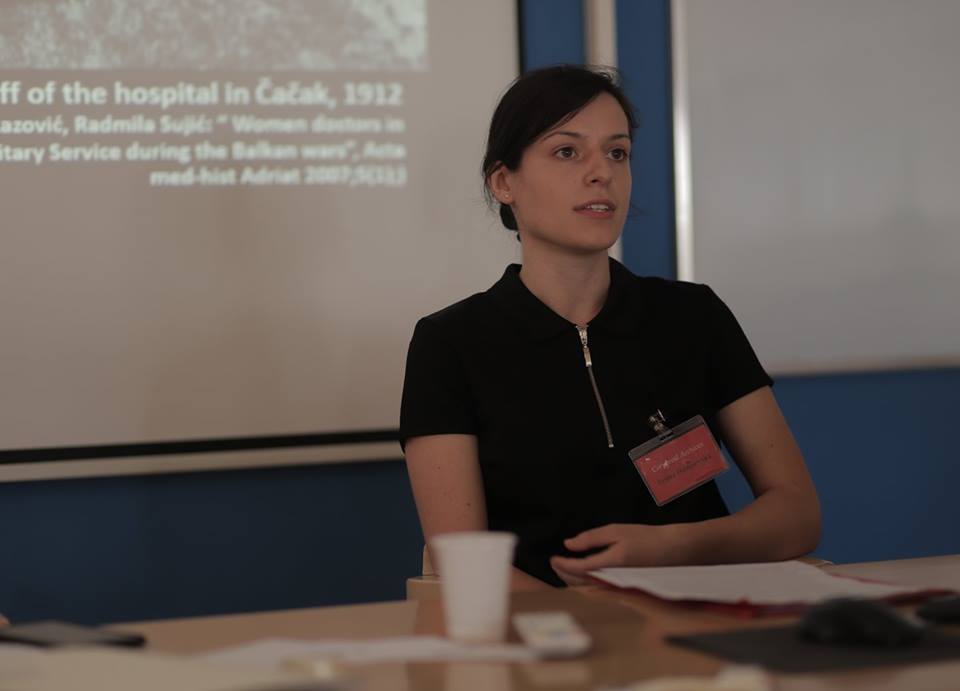
Младеновска, Ирена, Валентина Стаменковиќ и Мире Младеновски, Од домаќинка до државник. Родови перспективи во историјата (Скопје: АНИМ; ФорумЗФД, 2020), 7.
This article was first published in “Free Press” (Sloboden pecat), on February 26, 2021.
The magazine Makedonka (Macedonian woman) was an organ of the Antifascist Women’s Front (AFŽ) and the first print publication edited by women and dedicated to women’s issues in Macedonia. AFŽ activists and Veselinka Malinska, the journal’s first editor-in-chief, took the initiative to publish Makedonka in October 1944, and the first issue came out the following month. Today, the chronology, goals, and significance of this important publication in the history of Macedonian press in general, and for the history of women in particular, are known only in narrowly specialized academic circles or among those who nurture anti-fascist traditions. These are very small groups, and consequently the politics of memory and historical revisionism led to Makedonka’s disappearance from cultural memory. To revisit Makedonka primarily as a source for the history of women in Macedonia, one needs to account for “women’s political writing,” women’s visual representation in the political space, as well as for the “patriarchal historiographical gaze” with which they have been so far constructed as historical subjects.
The magazine was named Makedonka until 1953, when it was renamed Enlightened Woman – Organ of the Union of Women’s Societies in Macedonia (editor-in-chief Liljana Maneva); in 1990, it continued to be published under the name Woman (editor-in-chief Tatjana Kopacheva); from 1997 to 2005 it was published under the name New Woman (editor-in-chief Liljana Dirjan); and from 2005 for a short time it was published under the name Zgodna (Lovely). In fact, by following the development and changes that this publication has undergone, we can follow the changes in perceptions of women’s emancipation from socialism to the transition in the 1990s and to the re-patriarchization in recent decades.
In this article, I give a brief overview of the first issues of Makedonka, as a starting point for exploring the communication channels through which women began to conquer the public, and thus the political space during and after the Second World War.
The first issue of the magazine was printed on 24 pages, had a circulation of 2,000 issues, and was published in a small format once a month. The printing started in the illegal printing house “Goce Delchev”, located in the village Gorno Vranovce, Veles region (the memorial house and the museum exhibit are in disrepair today). However, due to the war conditions, the printing was moved to Prilep and then to Bitola, where after the liberation of the city, Makedonka’s first (November) and second (December) issues finally came out. The editorial team was composed of Veselinka Malinska, Nada Bogdanova, Lence Ivanova, Nada Achkova, and Balgojka Demnieva, and the designer was Vasilije Popovic-Cico. Textual and visual materials were collected through AFŽ district boards, which also organized group readings in the villages for illiterate women. The biggest challenge for the sustainability of the magazine was financial. Until the situation stabilized and state bodies that provided funding were established, the contributions to the magazine were voluntary, and printing was difficult and resulted in debts.

As Makedonka’s editors explained in an article dedicated to the tasks of AFŽ, the political motivation behind establishing the magazine was to strengthen women’s position as builders of the state, to establish their right to mass and active involvement in all professions and bodies of governance, and to connect with women from all over Yugoslavia to jointly address the “women’s issue.” The main tasks set in the first issue were to mobilize women for the final liberation of the territory and to attend literacy courses. The symbolic downplaying of ethnic differences is especially noticeable in the promotion of female solidarity and the portrayal of Macedonian women as Orthodox, Muslim, Jewish, Turkish, or Albanian. During the first war years, until 1946, the magazine had several recurring sections, which can be classified as follows: a political section, a section on the organizational life and tasks of AFŽ, local news and news from the villages, news from Yugoslavia and the world, a cultural-scientific section, and a professional section with tips for the home and workshop. The texts about military and political events were written in a solemn, panegyric style, and were accompanied by photographs of Tito and Stalin (until 1948). Texts that referred to women’s everyday lives in the villages or in the factories, however, as well as educational texts, clearly expressed women’s perspectives. These give more dimension to women’s political and social representation in public discourse at the time, going beyond the typical romanticized portrayal of Macedonian women as victims, martyrs, fighters, or humanitarians. They show us women who lived in the countryside in the mid-20th century and name the problems they faced. These women are not heroines from the front, but sufferers of the violent, patriarchal rural reality. Such articles, which are most often published in the counseling section, talk about men’s drinking, domestic violence, the position of women in marriage, hygiene, protection from various diseases, and topics related to women’s health. They invite research on the historical experience of women, and are as important as the articles documenting the reality of the politicians, partisans, or intellectuals of this period.
In the 19th and 20th centuries, the press played an important role in the processes of national building, as literary, cultural, and national patterns were established and destroyed through the print media. The partisan press was a means of resistance during the war, and Makedonka belongs to the anti-fascist women’s press that appeared throughout Yugoslavia and put forward clear ideological and political tasks to achieve the emancipation of women. They also envisaged the creation of the new “socialist woman,” which must still be read as part of AFŽ’s position within the Communist Party of Yugoslavia.
The digitization of Makedonka, now stored by the Department of Rare Periodicals of the National University Library in Skopje, would facilitate further research on the topic. At the same time, Makedonka is a source for narratives of women’s resistance, very much needed during this time of fierce reaction to women’s hard-won and almost-won rights, which has revealed that even basic feminist struggles have not yet been fully achieved.

Ivana Hadjievska holds a Master’s degree in history from the Faculty of Philosophy in Skopje, where she defended the thesis “The human condition of industrial workers in Vardar Macedonia (1918 – 1941).” Her research interests are in social history, history of women, and memory politics. She works as an independent researcher on projects that connect these interests with inclusive education and local activism.
